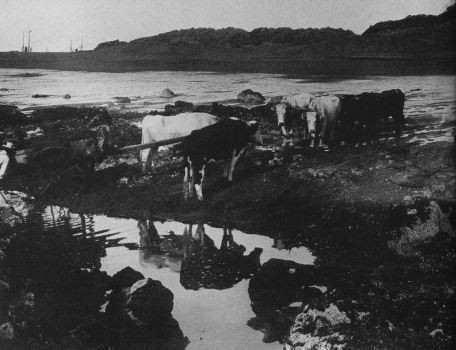5:6
New Zealand Refineries 1949 Ltd was renamed Taranaki Oil and Gas
Ltd to avoid confusion with the recently established New Zealand
Refining Company Ltd at Marsden Point, which was then in the process
of negotiating for the erection of the big oil refinery near Whangarei.
Wright was appointed by Shell BP and Todd as general manager, and the
beam pumps at Moturoa continued producing their small quantity of
highgrade crude which was refined in the 'home-made' refinery. One by
one, the wells began to yield more sea water than oil, and one by one
they were closed down. A few months after Des Wright died in New
Plymouth Hospital after a short illness in February, 1972, the consortium
announced the last pump would cease operation at the end of the
month, because rapidly decreasing production had reached an uneconomic
level. The refinery would continue processing ballast from
condensate tankers and sludge from the Paritutu tank farm, holding
point for Kapuni condensate awaiting shipment to the Marsden Point
refinery.
Without ceremony, on August 1, 1972, Egmont Oilwells affairs were
wound up and its assets taken over by Taranaki Oil and Gas Ltd, owned
by Shell BP and Todd Oil Services. Ray McMillan, who had been with
the company since 1949, continued as manager, a post he had occupied
following the death of Des Wright, until the refinery was dismantled in
1978.
ion (NZ) Ltd, but only insignificant amounts of oil were found, and in
1980 the only sign of 120 years of activity in the Moturoa area were a
couple of rusty 'Christmas tree' valves at wellheads and the Nodding
Neddy memorial to the men who had spent so much time and money in
searching for it. However, oil men are a persistent breed, and many feel
the origin of oil found at Moturoa may come from a deeper horizon, and
that deep drilling could find it in payable quantities.
Meanwhile the Shell BP and Todd consortium had discovered and
developed the Kapuni gas and condensate field. The condensate had
been piped into holding tanks at Ngamotu, disfiguring New Plymouth's
western skyline, according to many people. From there it was pumped
down to tankers at the port which took it to the Marsden Point refinery.
The consortium also spent several millions of dollars in geological and seismic surveys round Mount Egmont and sank several wells. One of these was at a swampy Blagdon Road site in 1965. The city was excited by the news that gas had been encountered at nearly 5000 metres (the deepest well sunk in New Plymouth), and was being flared off. This illuminated the suburb of Spotswood and could be seen from most parts of the city and attracted thousands of visitors. Late in January, 1966, the consortium announced that it was only a pocket of gas; the flare was extinguished and the well sealed off. Today the Blagdon Road site is a densely populated area with no evidence of its former activity. The laying of the pipelines from Kapuni to New Plymouth and to the north and south of the North Island, and the discovery and development of the huge Maui natural gas field following years of off-shore surveys and exploration, brought an era of prosperity to Port Taranaki and to a lesser extent to New Plymouth. By the time the Maui A production platform had been completed in 1977 more than 40 vessels of varying sizes had been at work, bringing equipment for the multi-million-dollar project. Most ofthem operated out of New Plymouth. Their crews, and the oil experts, were cosmopolitan, and brought new cultural, social and economic values to New Plymouth at a time when the rest of the country seemed to be entering a recession in all three spheres. But as the construction gangs completed their tasks and left, the possibility, that in the 1980s a vast complex could be producing methanol and synthetic petrol from Maui, the Waitara area and Kapuni fields to offset the increasing world fuel shortages, brought new hopes for the future.

